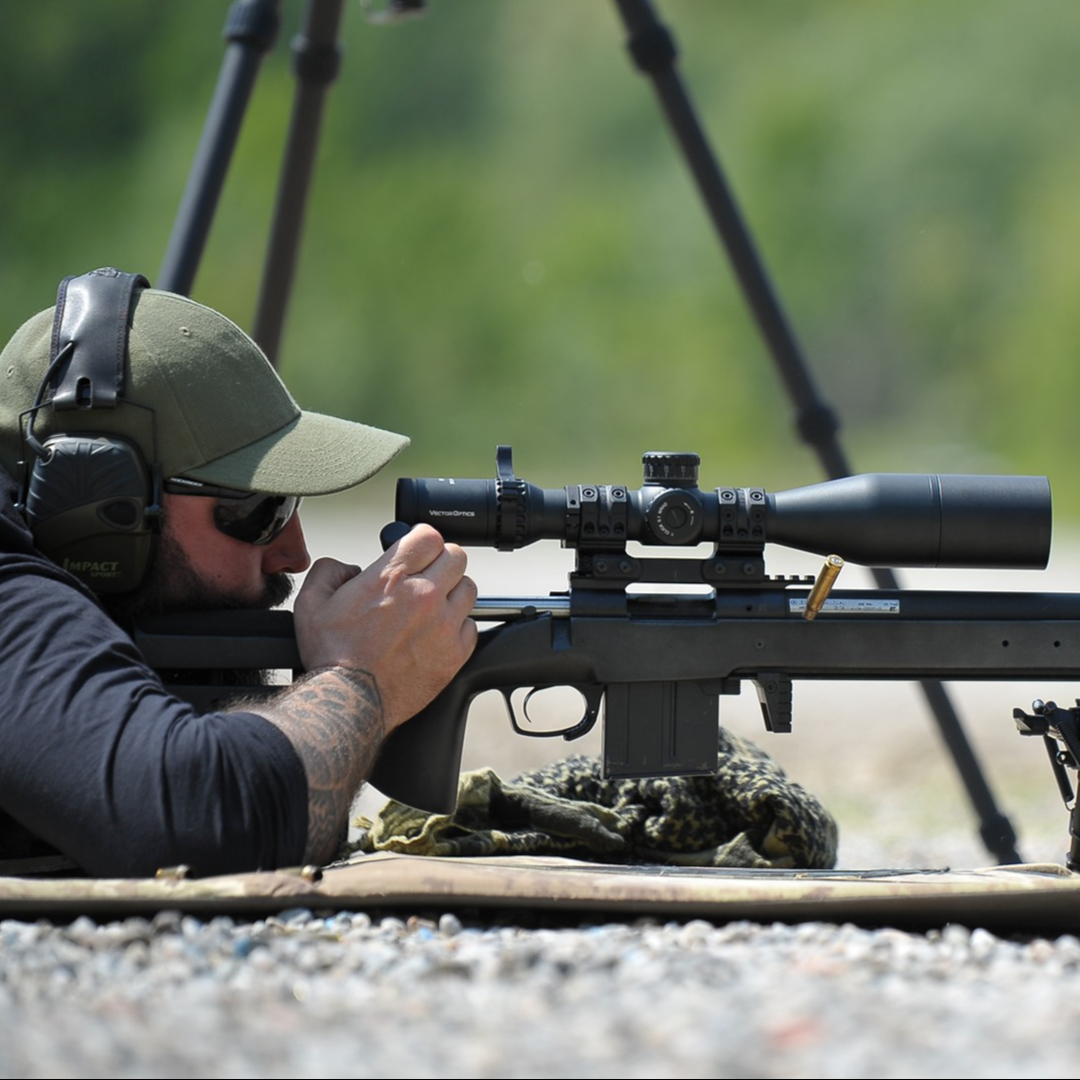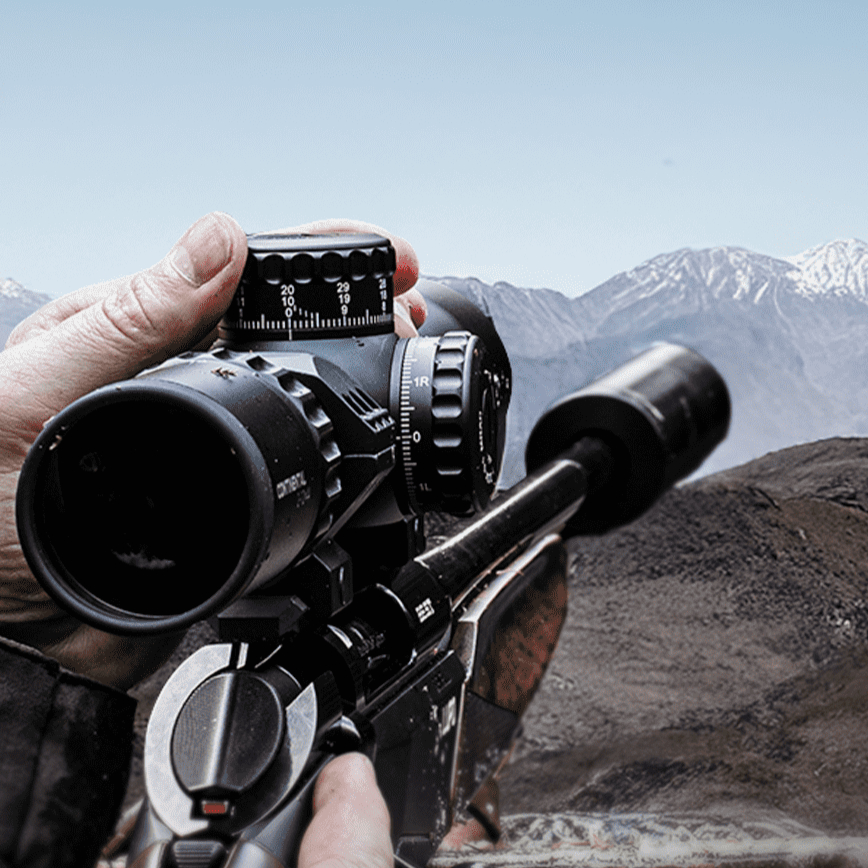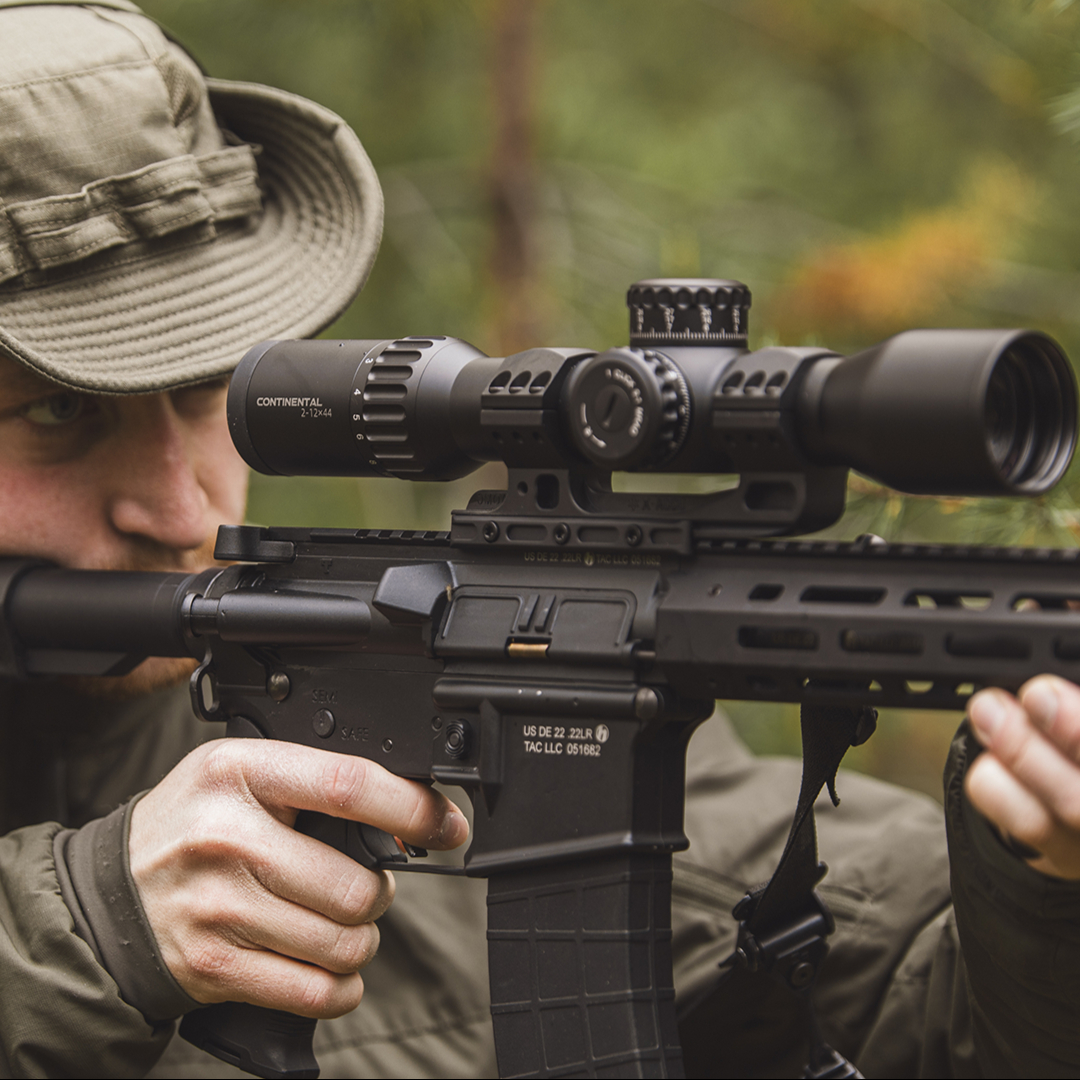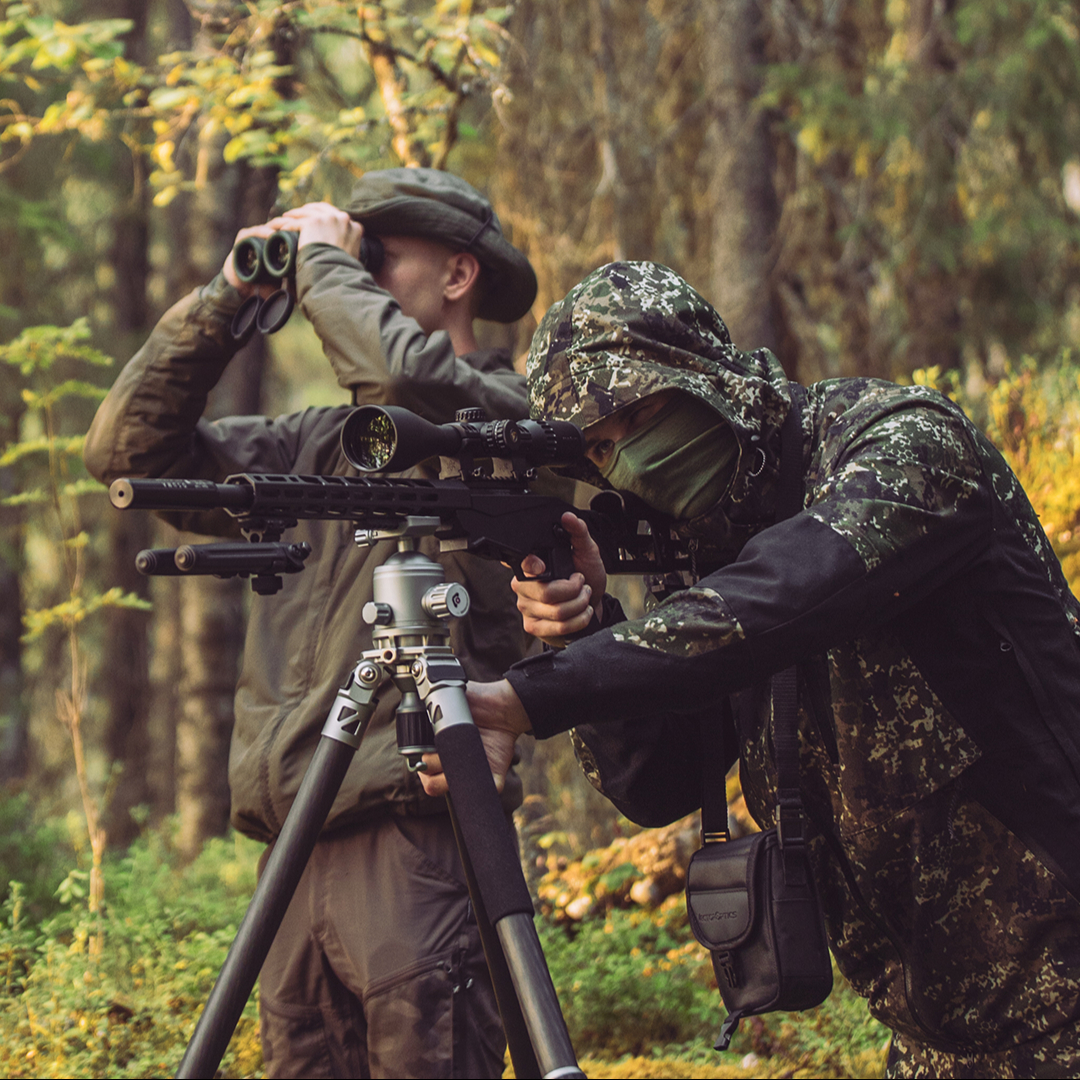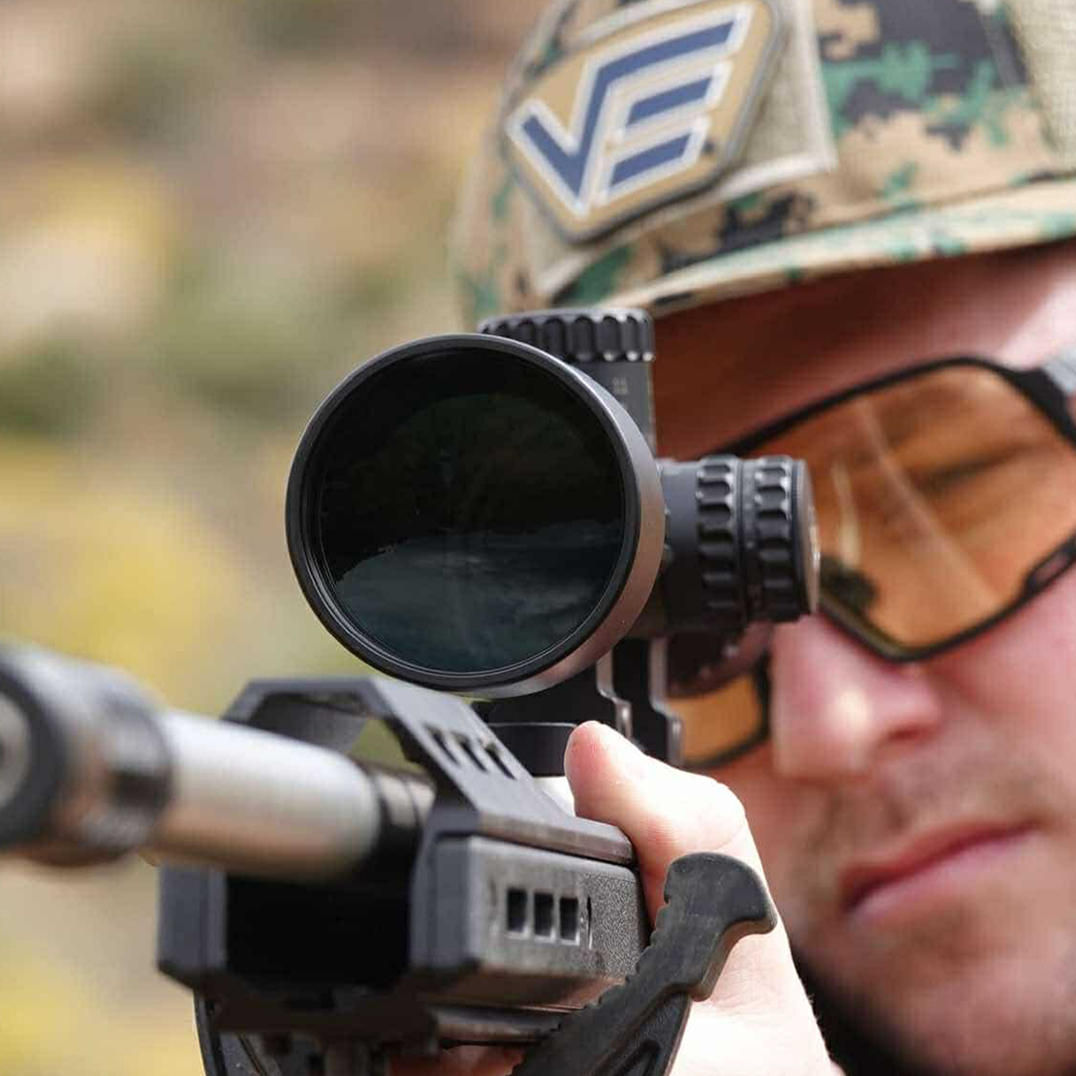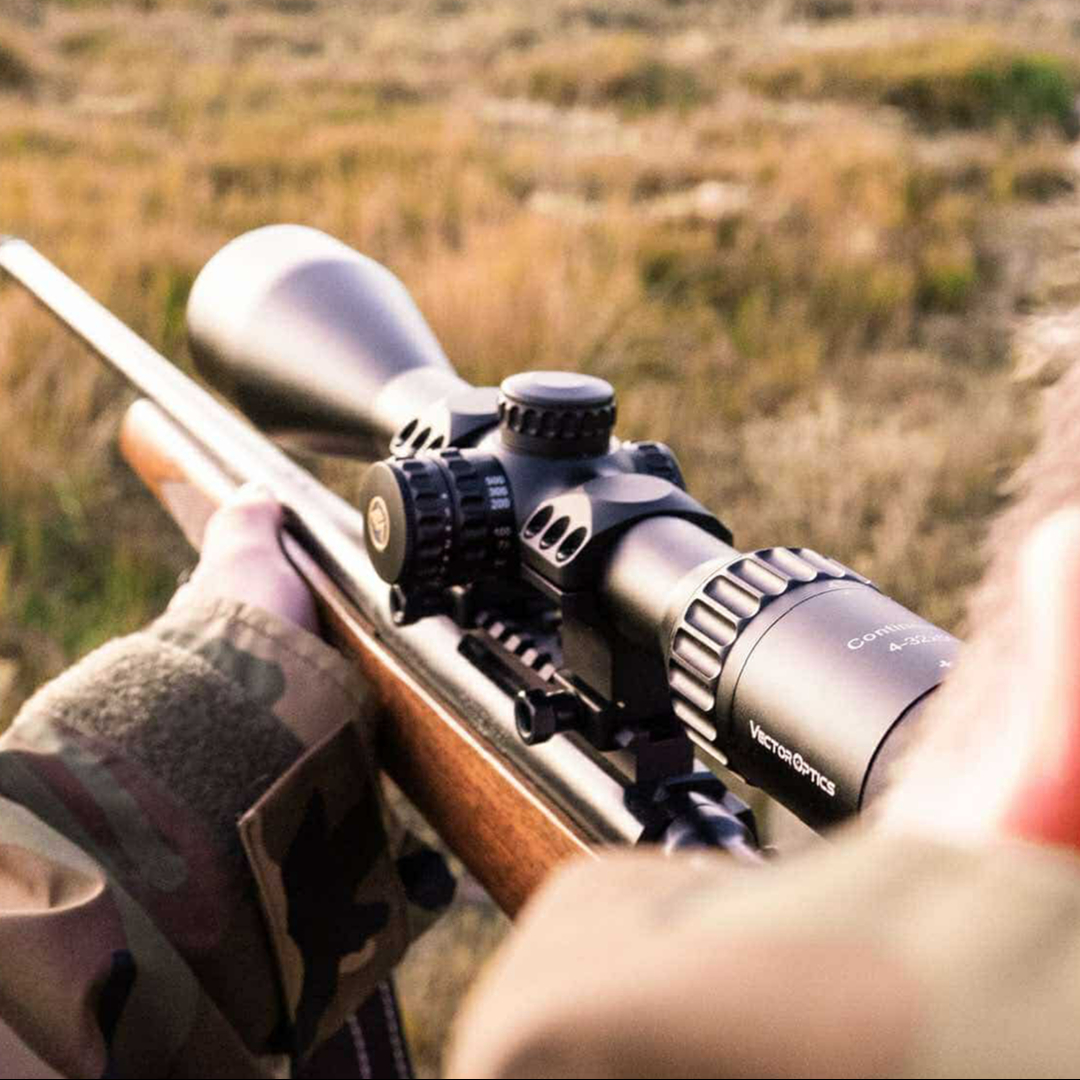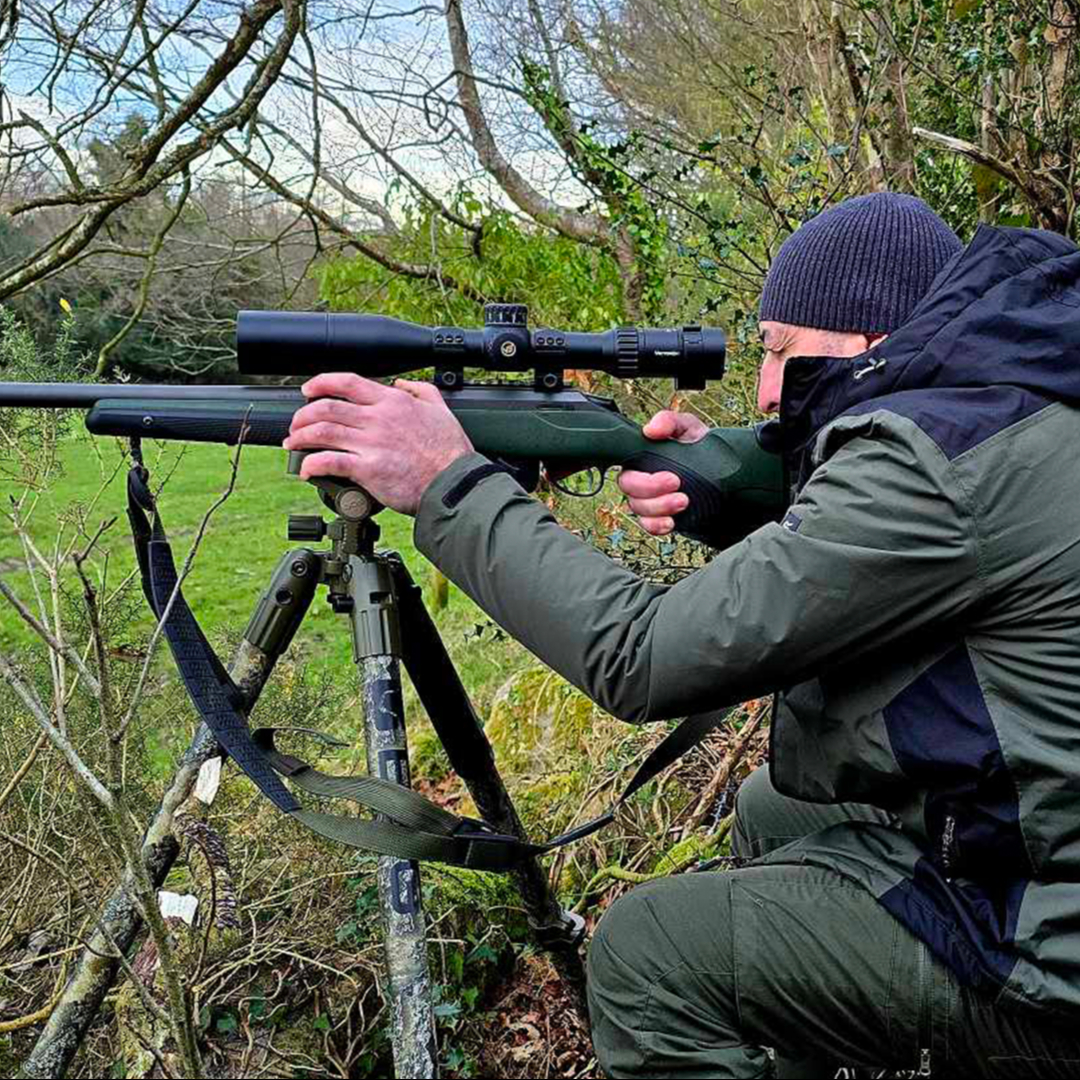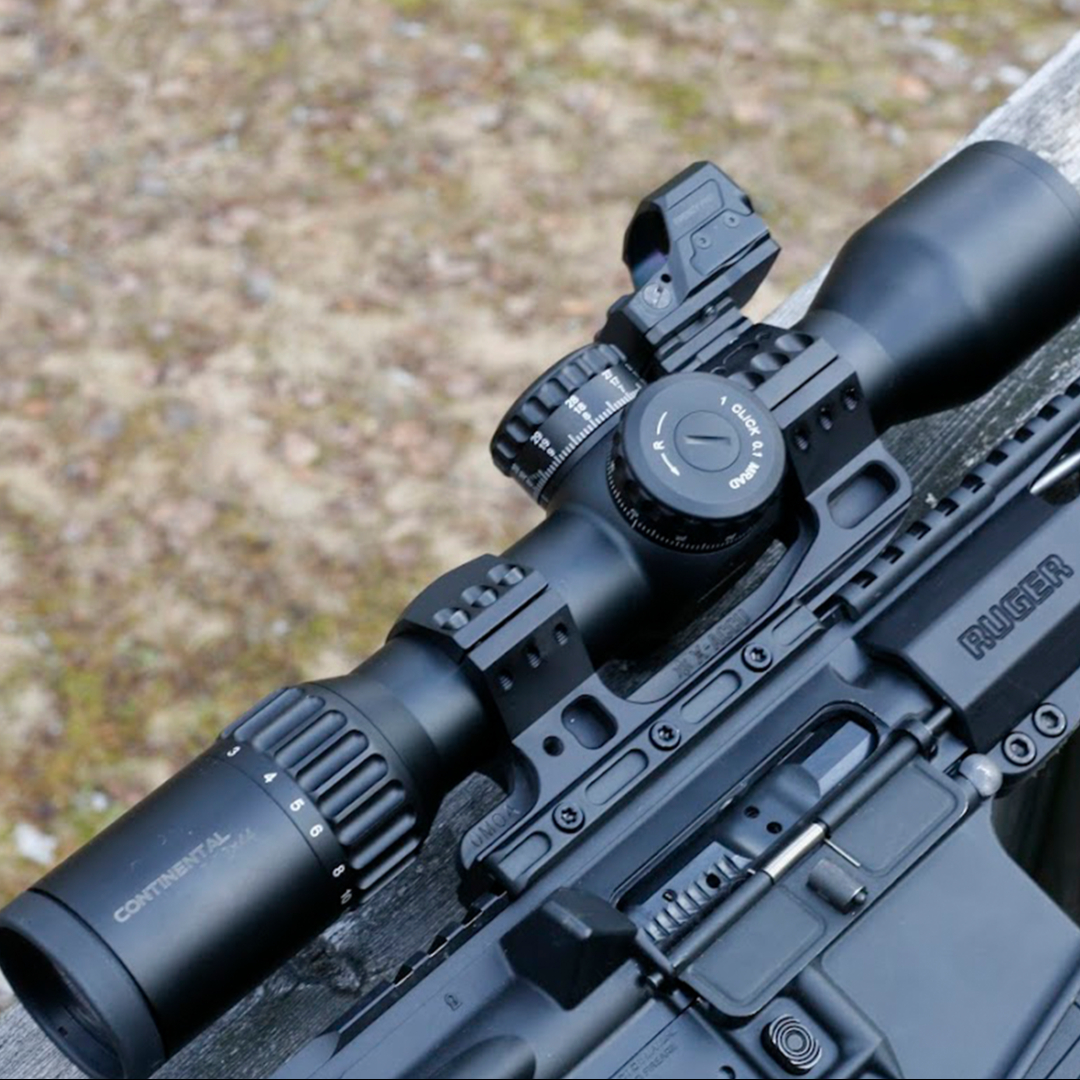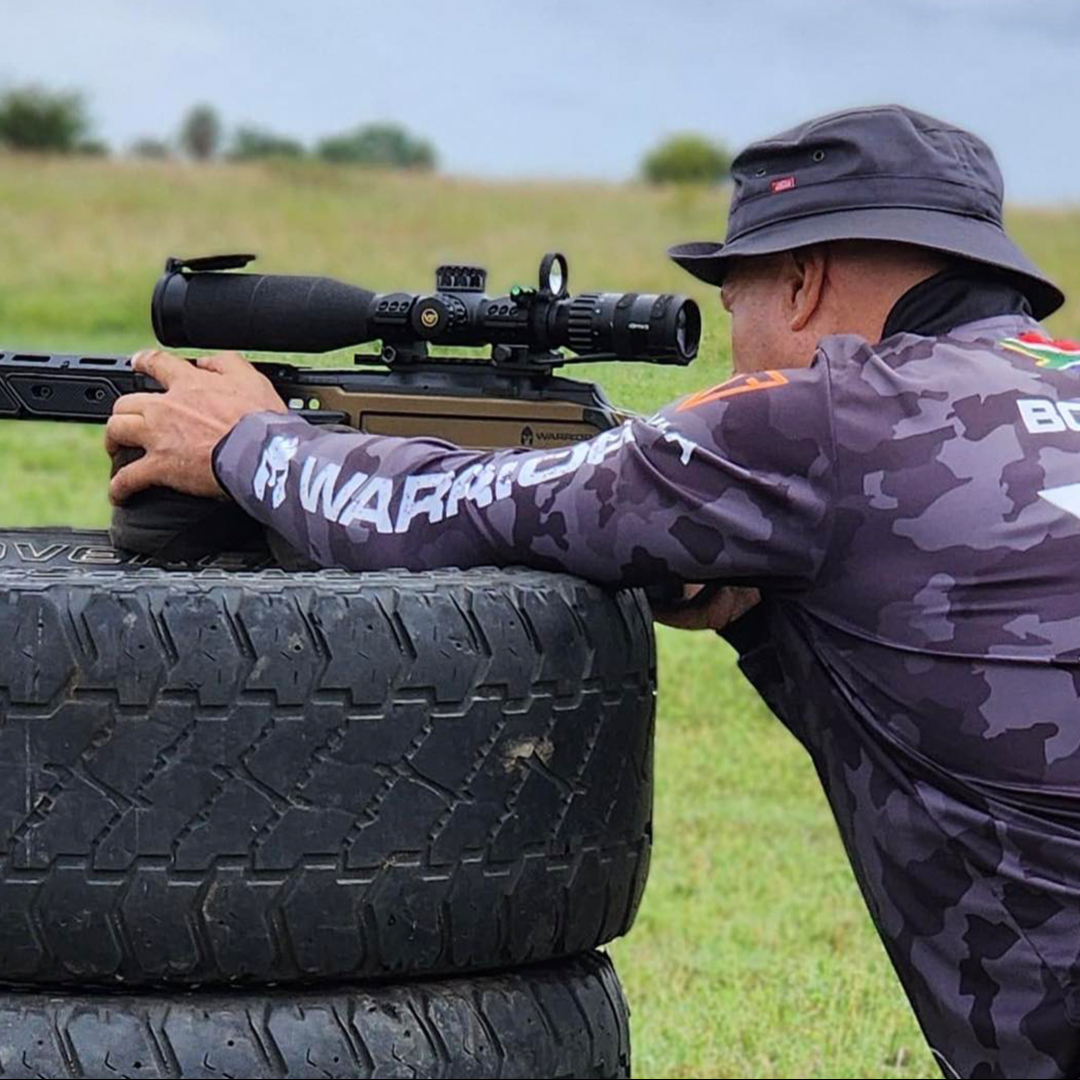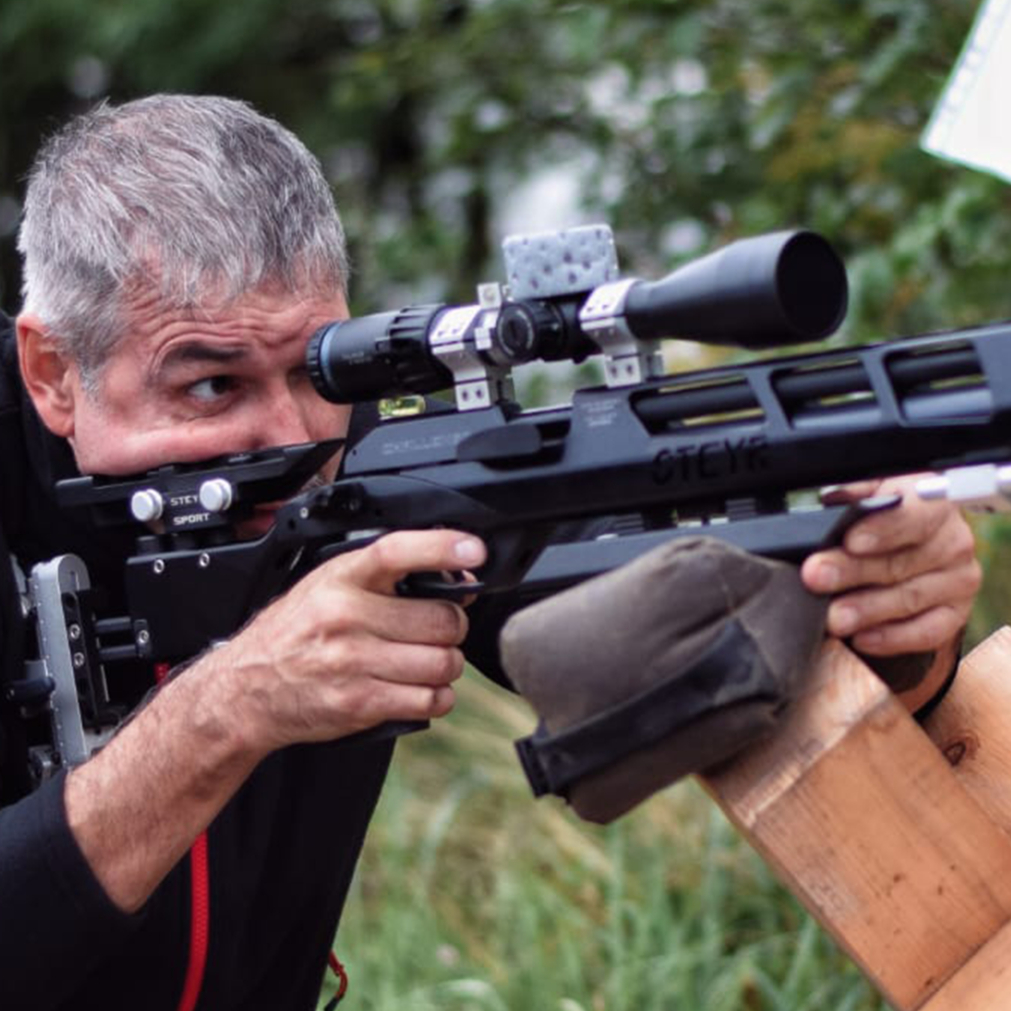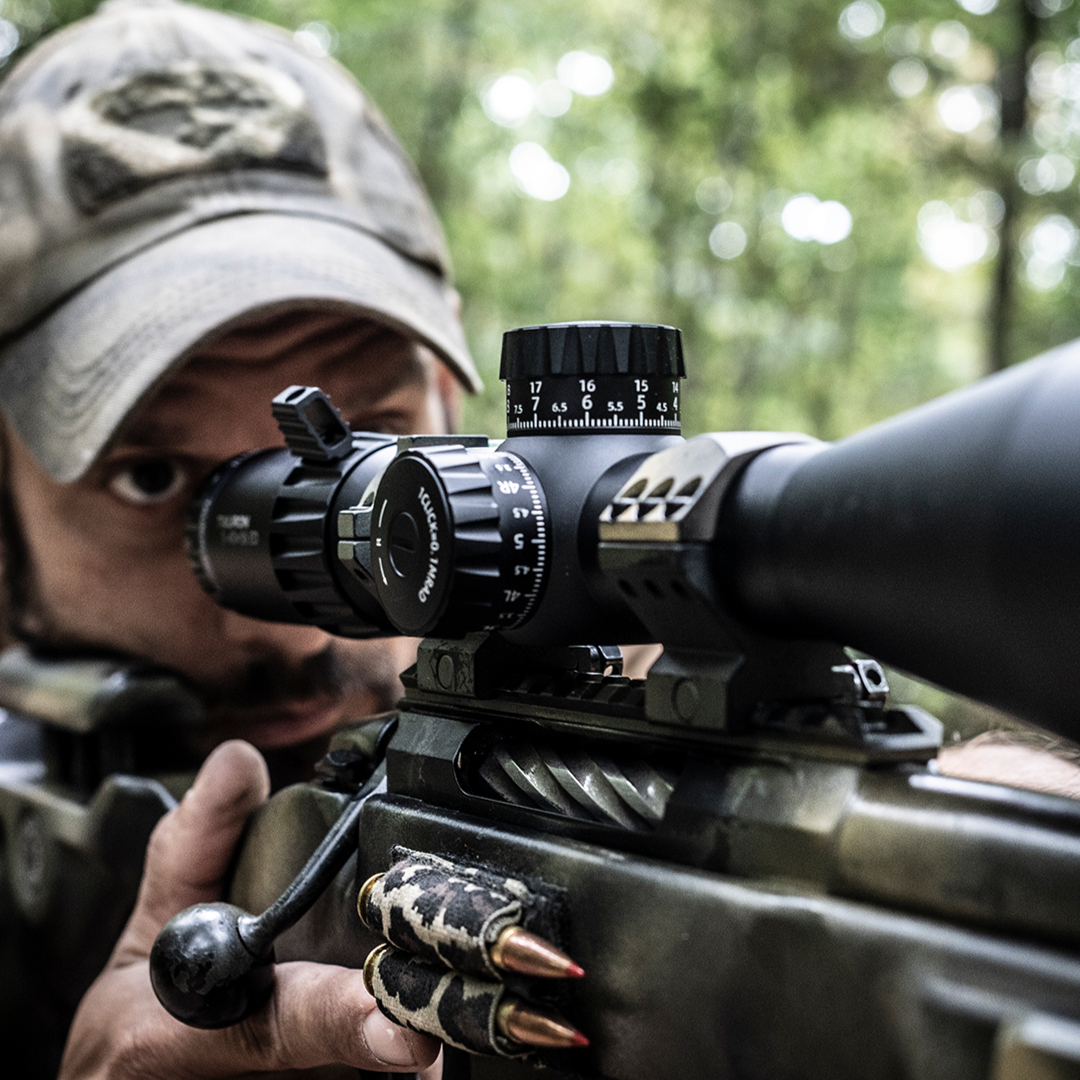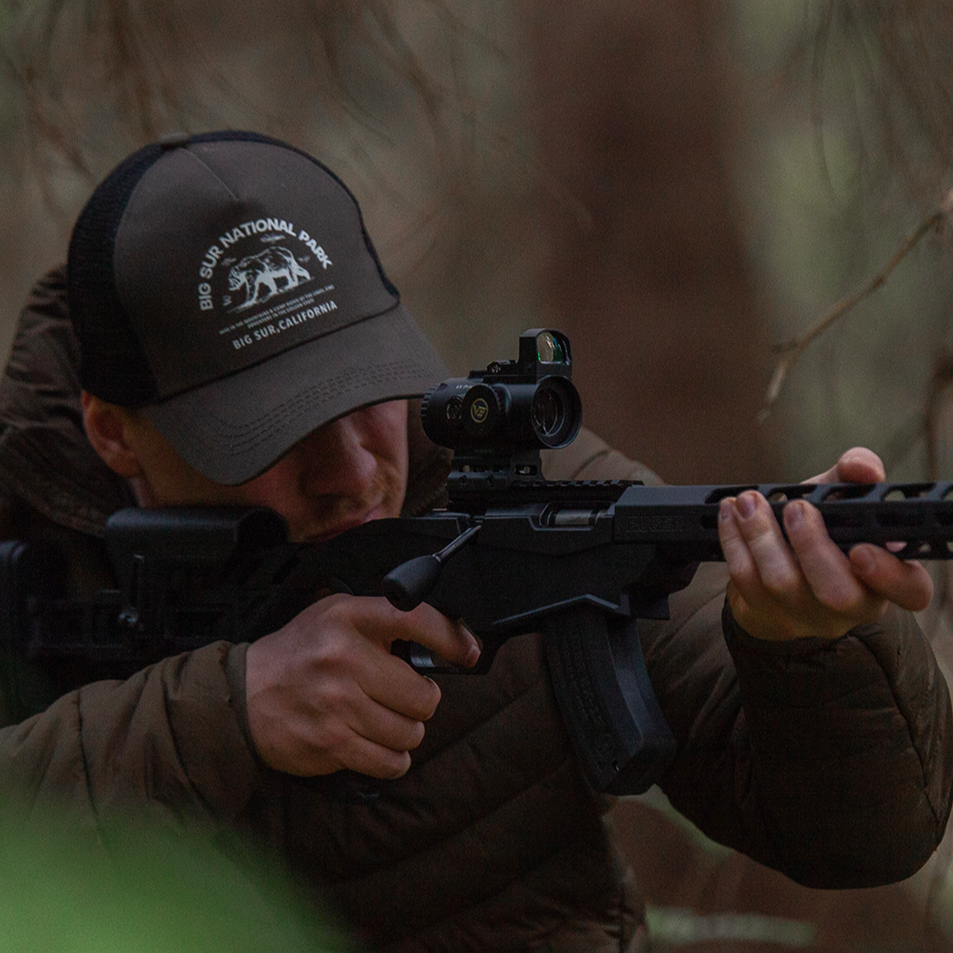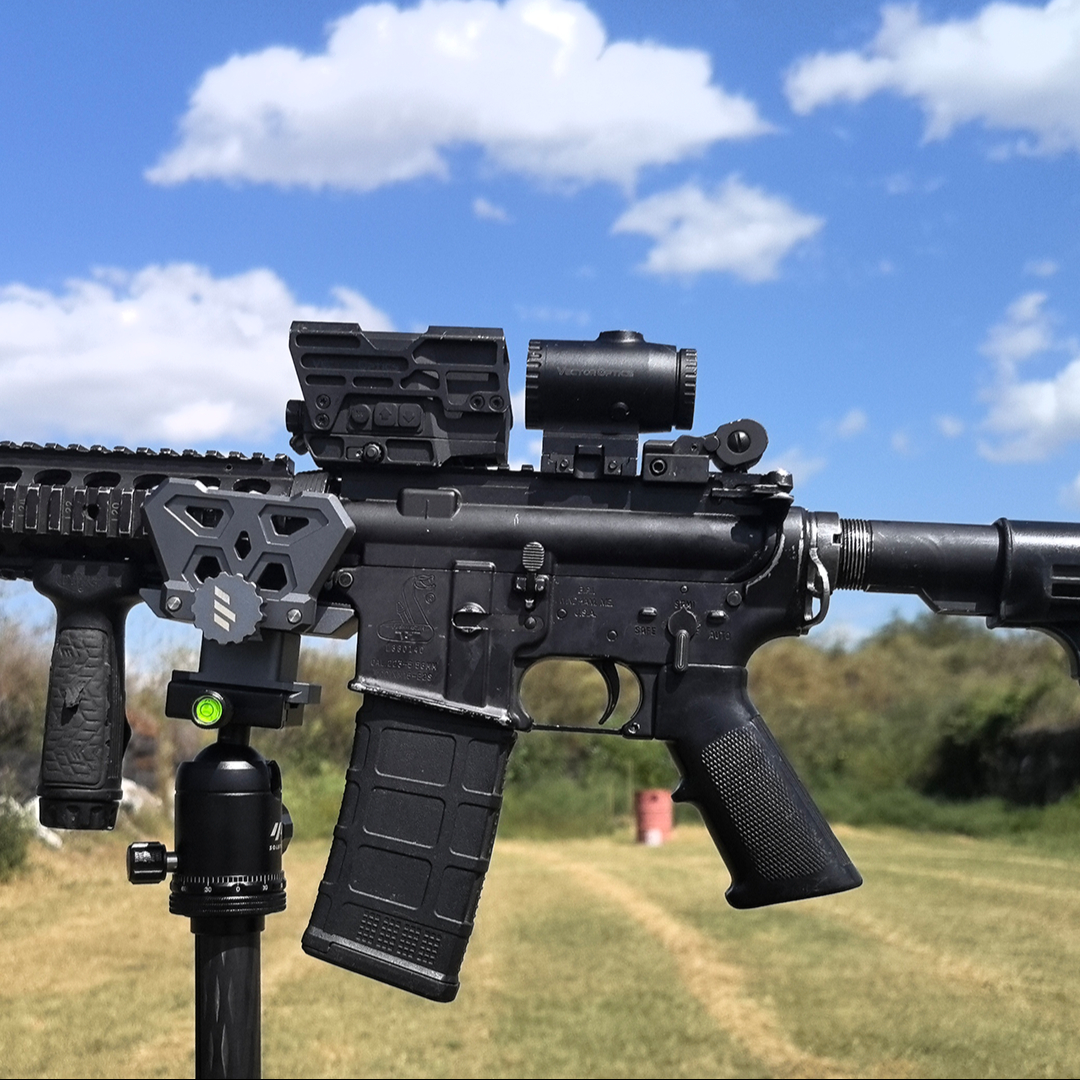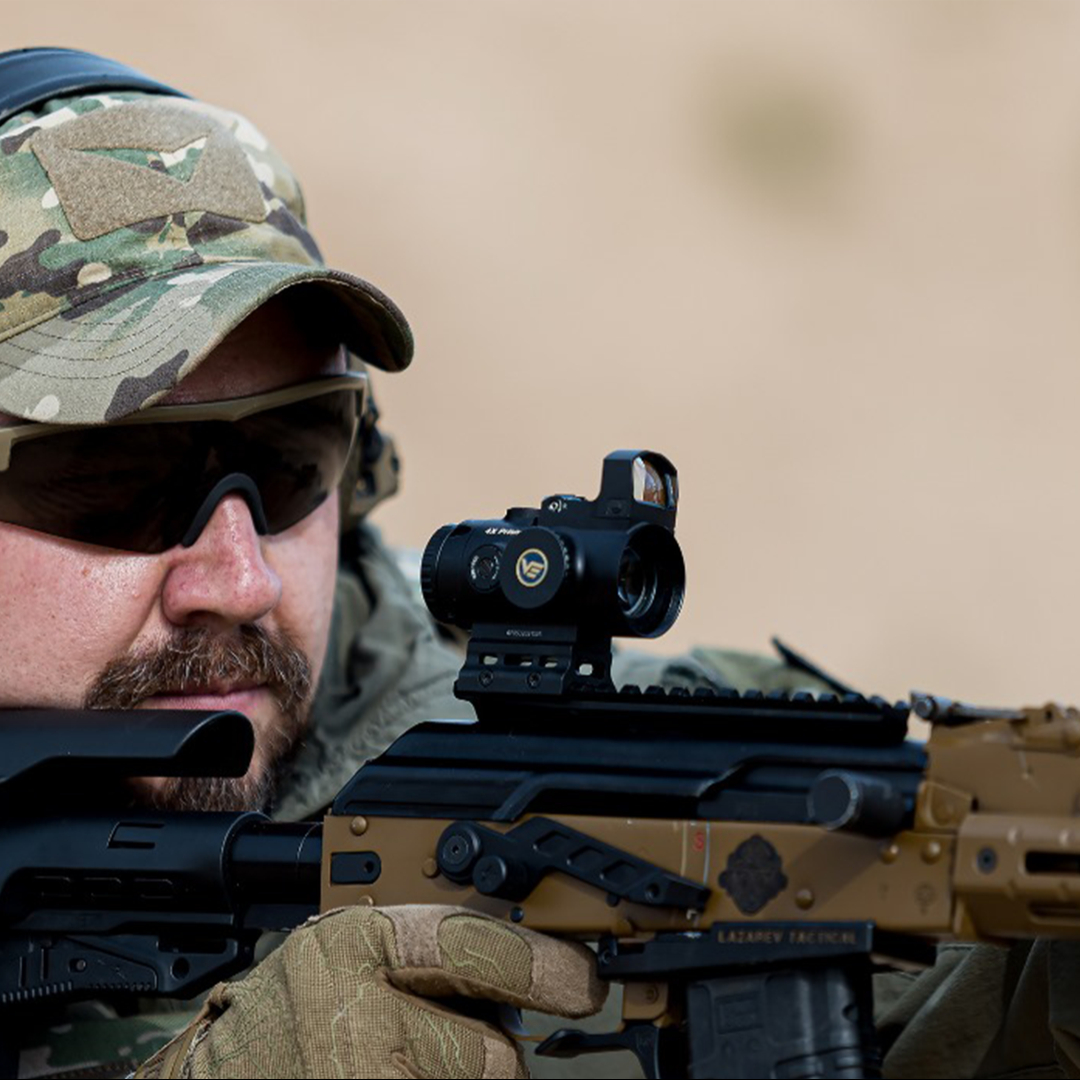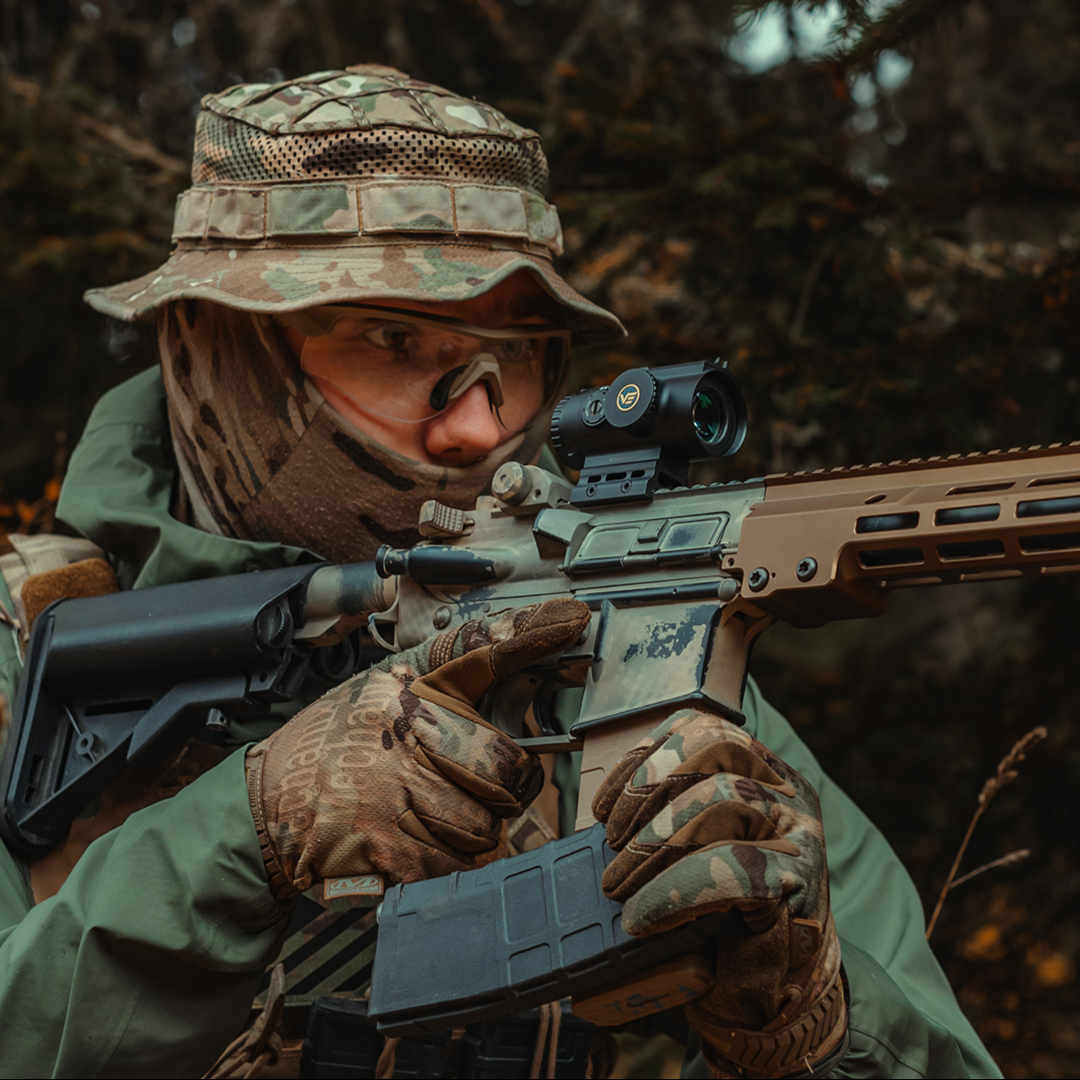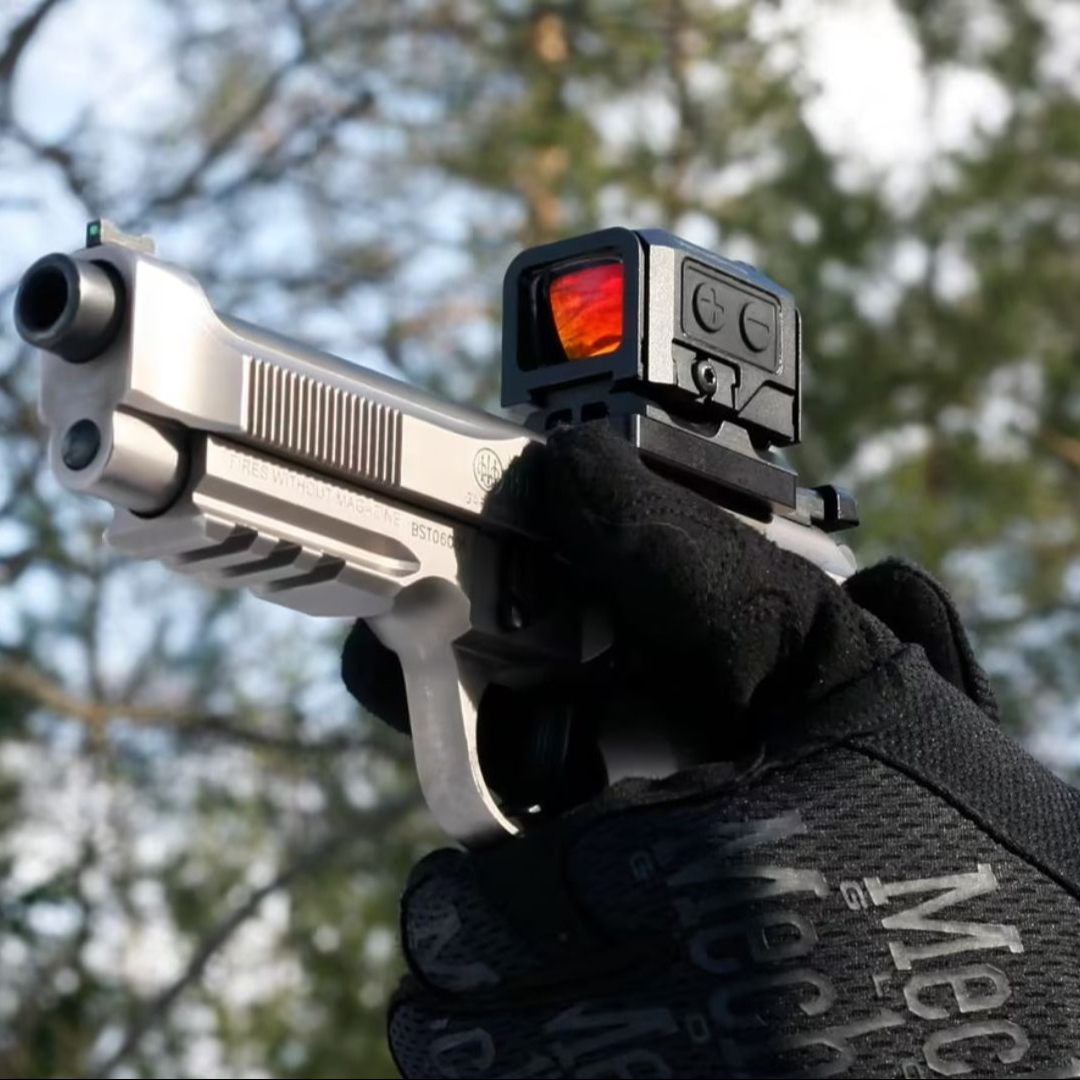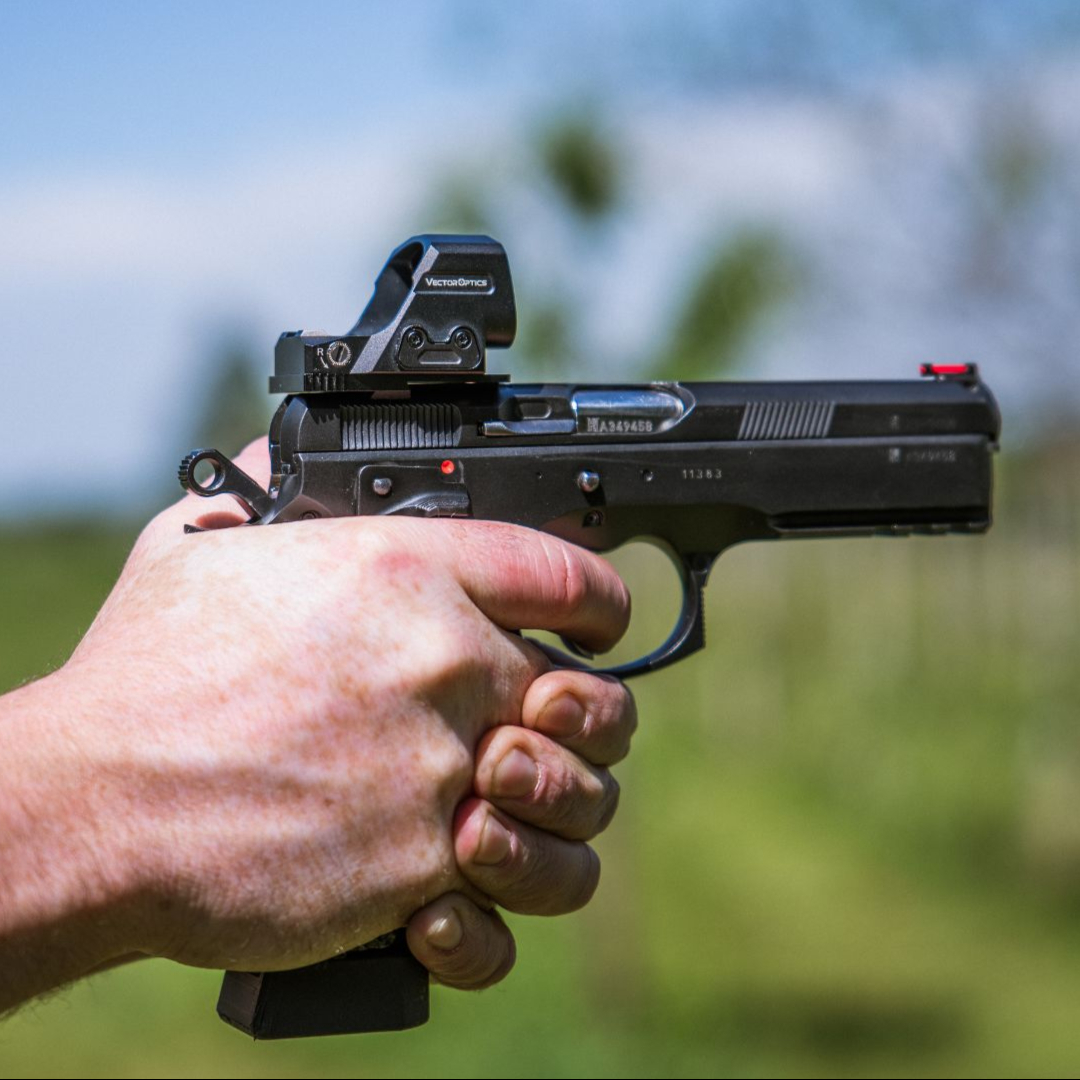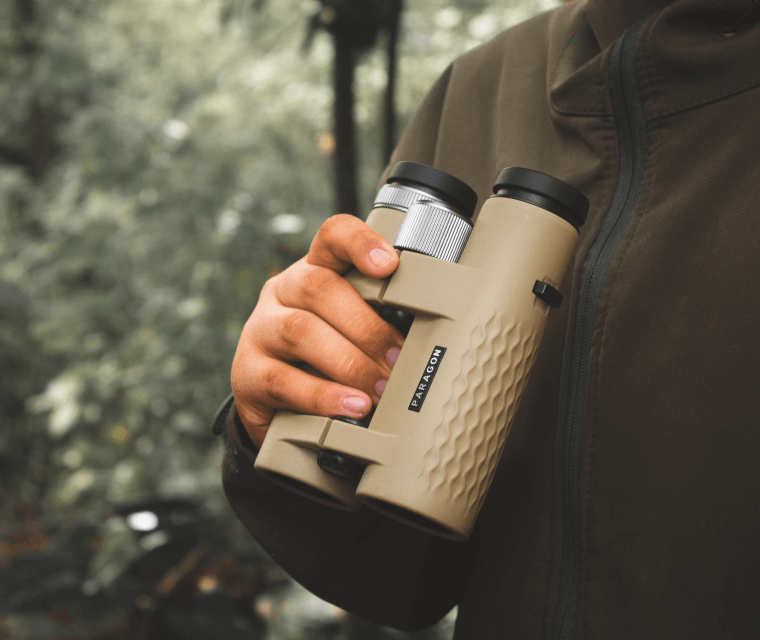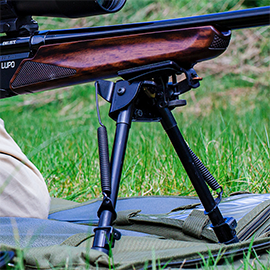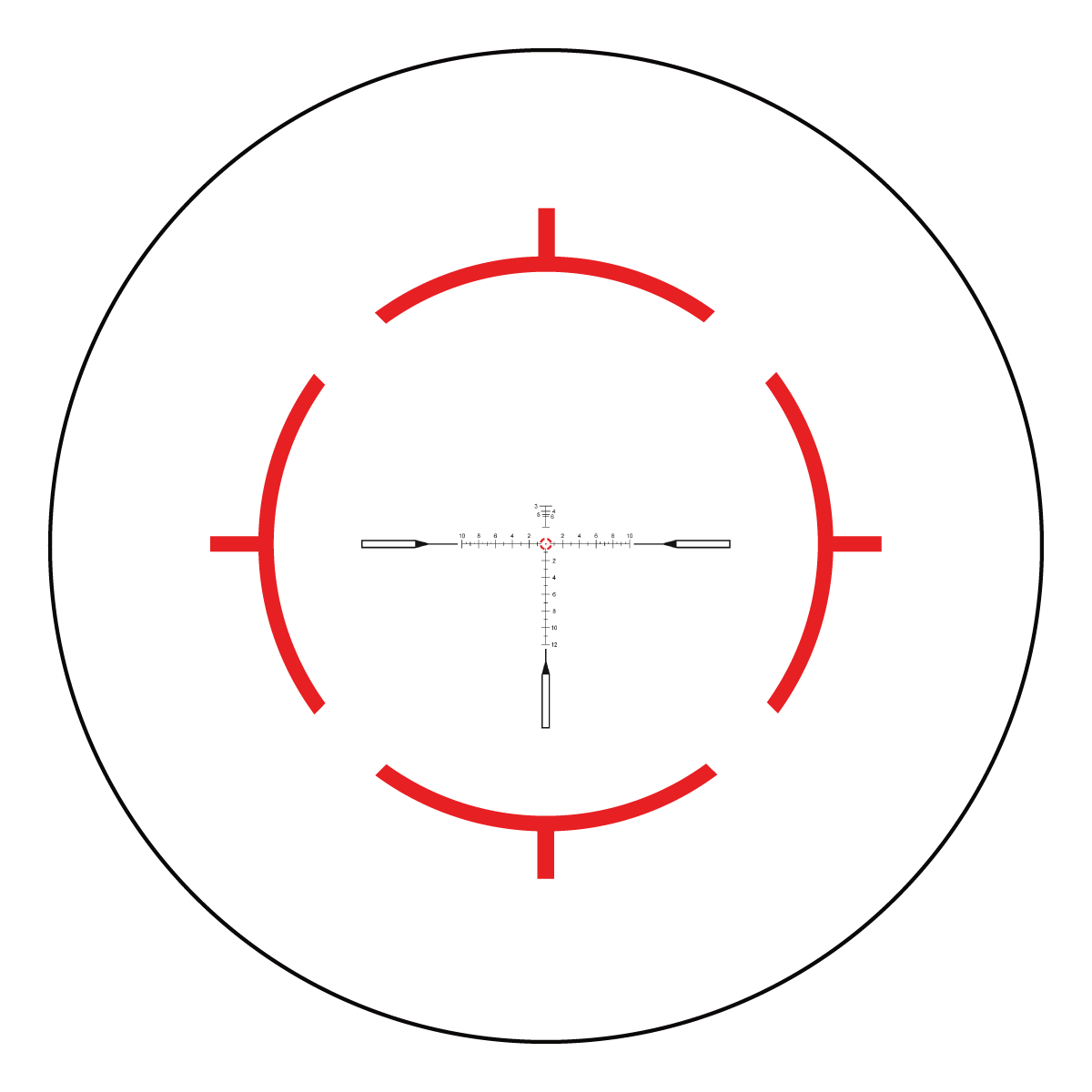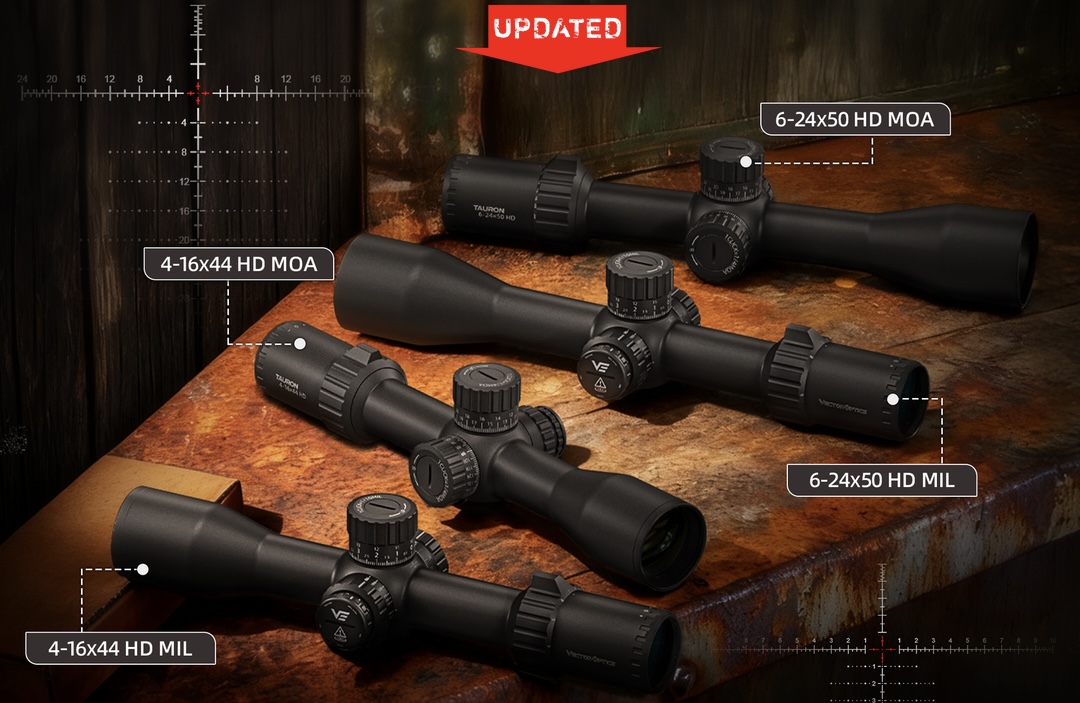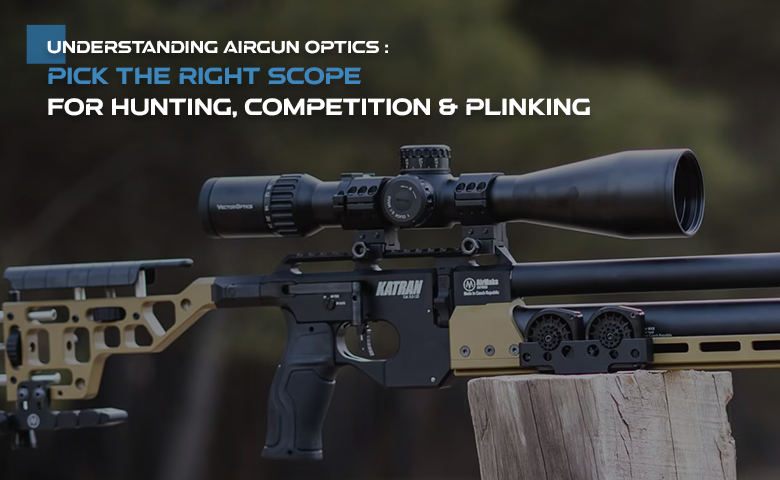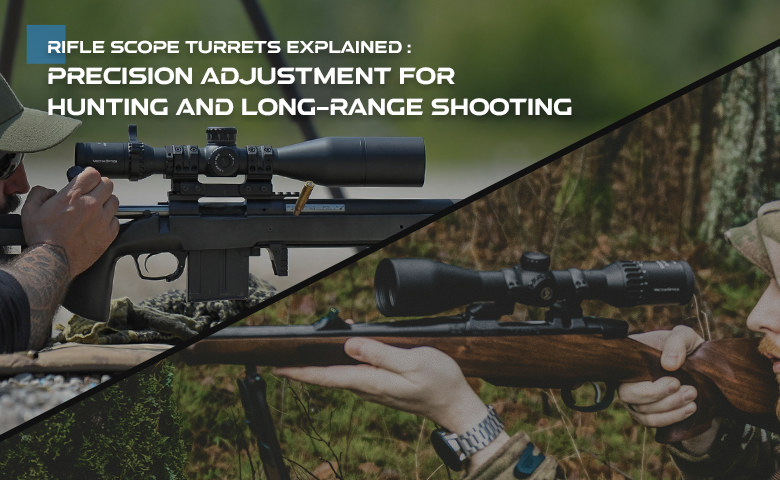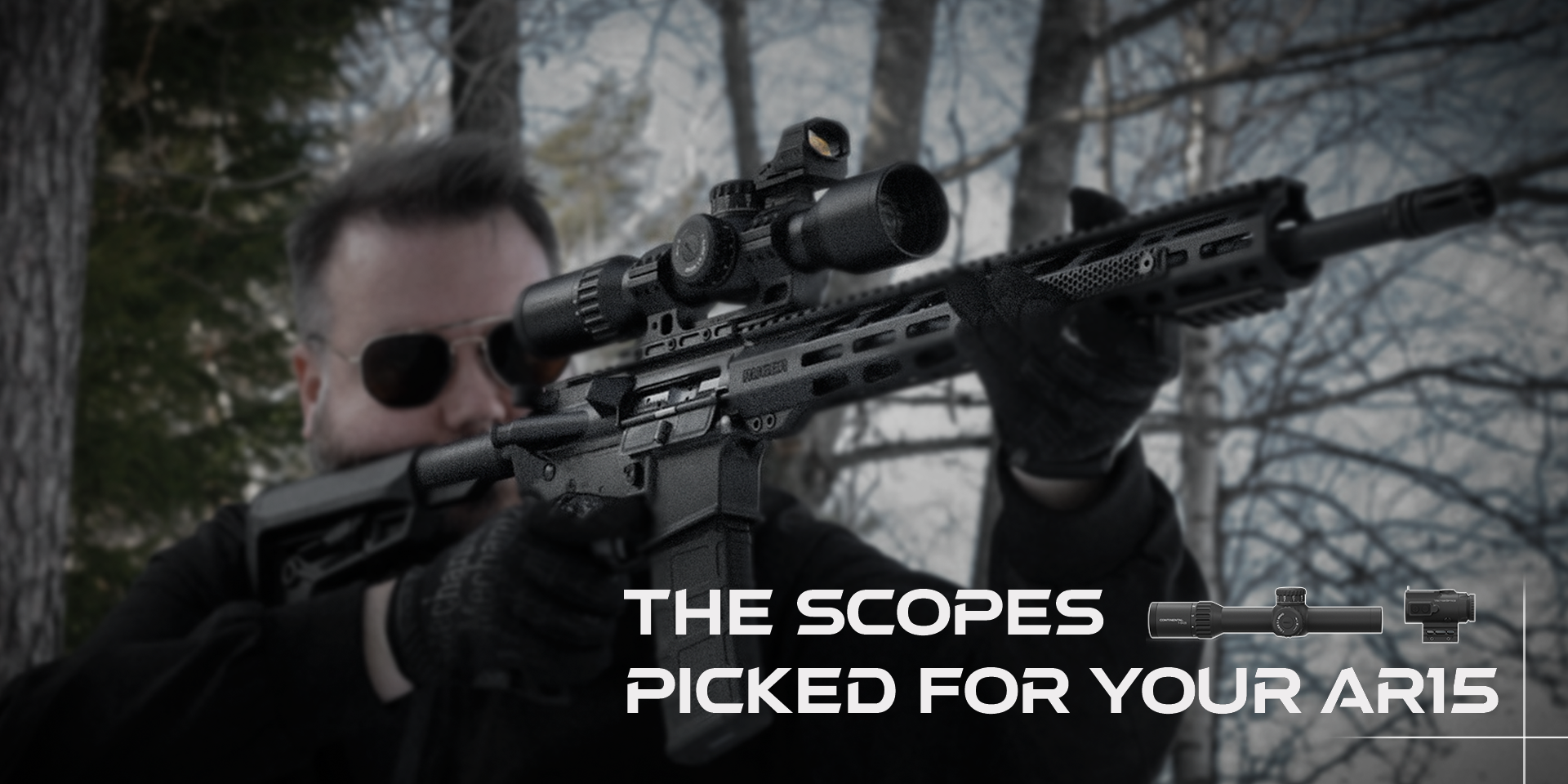Scope mounts and scope rings are the foundation of a reliable rifle setup. Without the right scope mounts and scope rings, even the best rifle and optic can lose accuracy. They keep your scope secure, maintain zero, and ensure consistent performance in hunting, competition, or other use. Now here is a complete guide for you to understand their types, features, and installation.
This guide is divided into three parts (click to view):
Part I: Types and Classifications
Part II: Special Features and Smart Designs
Part III: Choosing and Installing the Right Setup
You are now reading Part I of the series.
What Is a Scope Mount & Why Is It So Important?
A scope mount is the essential hardware that attaches your rifle scope securely to the firearm, ensuring it stays firmly in place during recoil and handling. Without a proper mount, your scope cannot preserve zero, meaning the point of aim will shift and ruin your shot accuracy. A scope mount isn’t just a piece of metal to hold your scope. It’s the bridge that connects your optic to the rifle’s rail, making sure every adjustment you make on the scope—up, down, left, or right—actually changes where your bullet lands.

(various scope mounts & scope rings)
Scope mounts play a crucial role in keeping your scope stable and aligned. Quality mounts securely fix the optic, maintain zero, resist harsh conditions, and often include features like built-in elevation compensation, which adjusts for bullet drop with fixed angles (typically 20 MOA or higher).
Types of Scope Mounts: Understanding Your Options
There are three primary ways to categorize scope mounts, which every shooter should understand to make an informed choice.
1. By Design: One Pair of Scope Rings vs. One-Piece Scope Mounts
In terms of design, scope mounts can be divided into two types: one pair of scope rings and one-piece scope mounts.
One pair of scope rings are usually two separate pieces that clamp around the scope tube. Each ring consists of a ring body (the base) and a removable ring cap that secures the scope in place. These are also called separate or two-piece rings.
One-piece scope mounts are a single integrated base that holds the scope firmly in place as one unit, combining the rings and base into a single piece of metal for easier installation and consistent alignment.
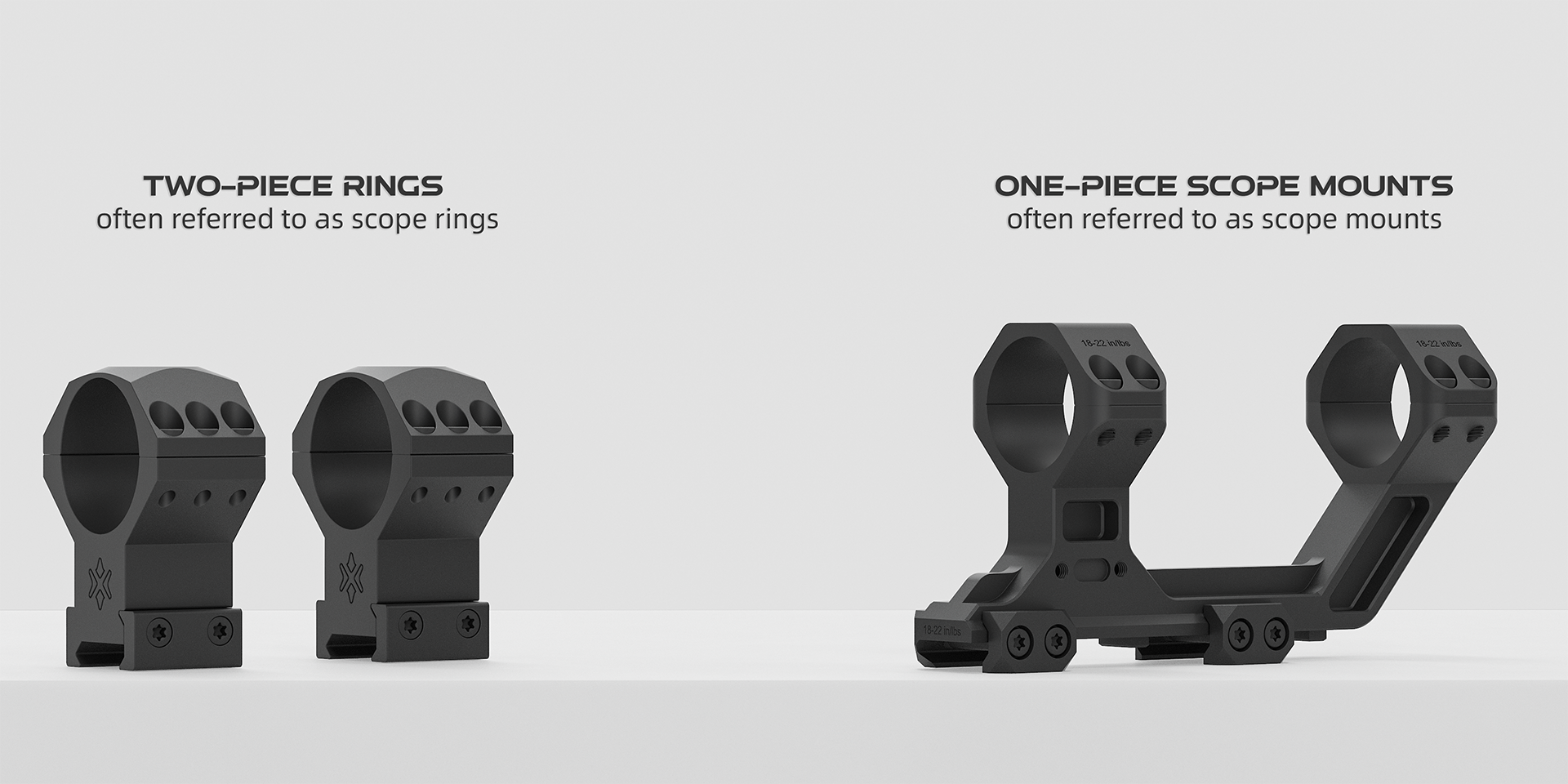
(One Pair of Scope Rings & One-Piece Scope Mounts)
In general usage, shooters often use “scope rings” to describe the two-piece style, while “scope mounts” is more typically used for one-piece designs.
| One-Piece Scope Mounts | One Pair of Scope Rings |
Pros | Superior rigidity and resistance to flexing: The scope mounts construction eliminates weak joints, helping the mount maintain zero even under heavy recoil Better zero retention: Once zeroed, the optic is less likely to shift after disassembly and reassembly Integrated cant or elevation angles: Many one-piece mounts incorporate built-in elevation (e.g., 20 MOA) to assist with long-range shooting by pre-adjusting the scope’s angle Cantilevered designs: Especially useful on AR-15/M4 rifles for proper eye relief on shorter stock, while LPVOs—with their longer eye relief—require only a few upper-rail slots for secure mounting*** Rugged and reliable in challenging environments: Built to perform in harsh weather, heavy recoil, and demanding shooting disciplines such as PRS competition Improved coaxial alignment for precision: One-piece mounts keep both rings perfectly aligned on the same axis, reducing stress on the scope tube and helping maintain consistent zero for long-term reliability
| Lightweight and compact: Typically less bulky and lighter than one-piece mounts, ideal for hunting or lightweight builds Flexible positioning: Each ring can be positioned forward or backward independently, allowing flexible spacing for easier installation Cost-effective: Generally less expensive to manufacture and purchase compared to one-piece mounts Widely compatible: High-quality scope rings provide flexible positioning on the rail, giving more slot options to fit different scope lengths and rifle setups Greater adjustment range: Some rings with adjustable function, offer more flexibility, providing a canted mount effect for increased elevation adjustment
|
Cons | Heavier weight: The integral construction and additional material make these mounts heavier than rings, which can be a drawback for hunters or those prioritizing lightweight gear Require sufficient rail length: One-piece mounts need a long enough Picatinny or Weaver rail to install fully; shorter rails might limit compatibility Less flexible in positioning: The fixed spacing of a one-piece mount means the entire unit moves together, limiting fine-tuning of eye relief for compact scopes
| Lower rigidity and strength: Scope rings can flex or shift under heavy recoil, potentially causing zero shift More prone to mounting inconsistency: Improper installation can misalign rings, risking scope tube stress or deformation and requiring re-zeroing Limited ring spacing: Fixed rail slots may restrict ideal ring placement for longer scopes
|
***Notes: AR-15 style rifles have Picatinny rails on the upper receiver and sometimes on the handguard, which are not fixed to each other but can move slightly relative to each other.
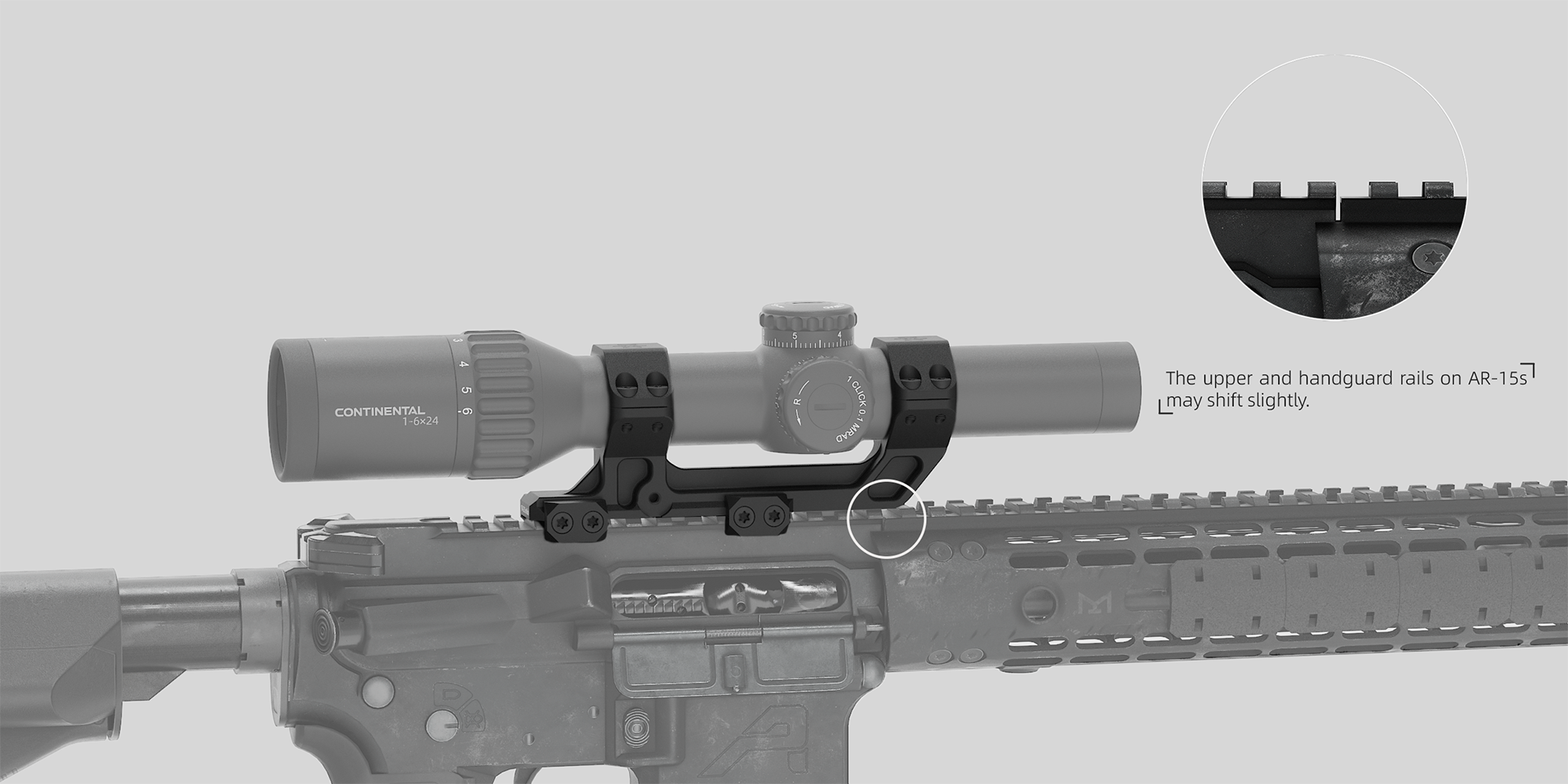
(AR-15 Ready Cantilever Mounts for LPVO Scopes)
Do NOT mount scope rings with the front ring on the handguard rail and the rear ring on the receiver rail, as relative movement can stress the scope and affect accuracy. Instead, use a cantilever or one-piece mount that attaches entirely to the receiver rail for maximum stability.
For AR-15 scope mounts and AR-15 scope rings, 30mm 1-Piece Extended Picatinny AR Mount (XASR-3031), 30mm 1-Piece Extended Picatinny AR Mount 20MOA (XASR-3032) are highly recommended for you.
2. By Mounting Method: Fixed Mount vs. Quick Release Mount
In terms of mounting method, scope mounts can be divided into two types: the fixed mount and the quick release mount.
Fixed mounts are secured tightly using screws and require tools (e.g., torque wrench, Allen keys) for installation and removal. They provide the most solid, vibration-resistant connection.
Quick release mounts use levers, buttons, or cam locks to enable tool-less mounting and removal of optics in seconds. They are ideal for shooters who need to quickly switch optics between different rifles or swap between different optics on the same rifle. However, frequent removal and reinstallation may require re-zeroing your scope.
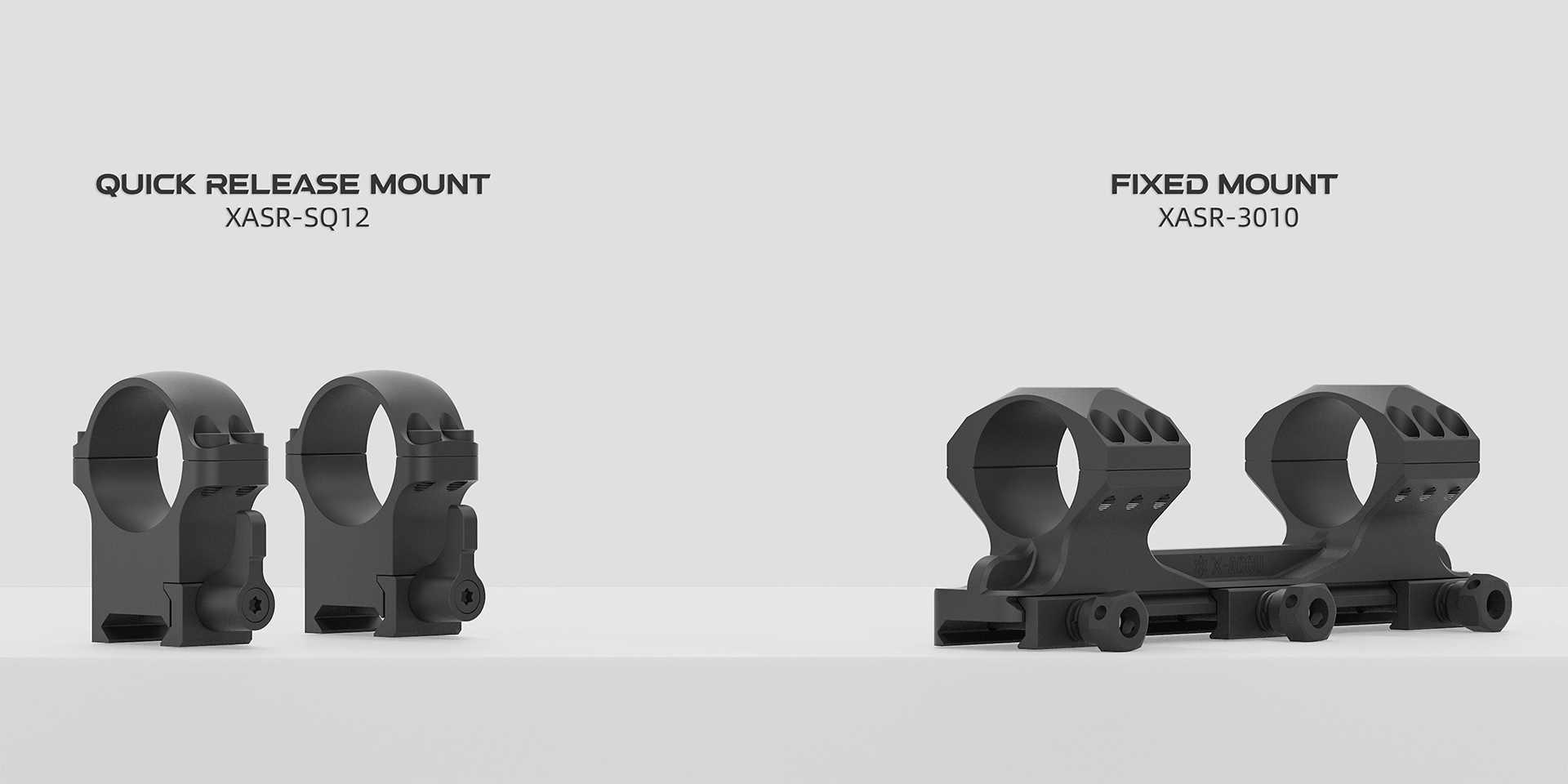
(Quick Release Mount & Fixed Mount)
| Fixed Mount | Quick Release Mount |
Pros | Maximum stability and zero retention: Simple yet durable design minimizes any movement or looseness between mount and rail Lower cost: Simpler mechanism means less expensive manufacturing Widely available: Plenty of options for all budgets and needs
| Rapid optic swapping: Easily transition between red dots, magnified scopes, or night vision devices for versatile shooting scenarios, reducing reaction time Retain zero reasonably well: High-end QD mounts can maintain zero within tight tolerances Ideal for multi-platform users: Quickly move optics between rifles
|
Cons | Less convenient to remove: Not ideal for shooters who need to frequently switch between different platforms or swap between different optics on the same rifle Slower installation and removal: Requires tools and time
| Higher cost: To achieve the same material strength and shock resistance as fixed mounts, QD mounts require complex mechanical parts, making them 2–3× more expensive Potential for minor zero shift: Lower-precision or less shock-resistant quick release mounts may have slight play in the mechanism, affecting repeatability Added weight and bulk: Lever assemblies increase mount size
|
Recommended SKU | XASR-3100, XASR-F3100, XASR-3010, XASR-3011, XASR-3012, XASR-3013, XASR-3031, XASR-3032, XASR-3033, XASR-3037, XASR-3035, XASR-3036, XASR-3014, XASR-3015 | XASR-SQ01, XASR-SQ02, XASR-SQ03, XASR-SQ10, XASR-SQ11, XASR-SQ12, XASR-SQ13 |
The X-Accu mount series (SKU:XASR-XXXX) features precision CNC machining, durable construction, and multiple size and height options, providing stable and accurate support for any shooting scenario.
3. By Material: Aluminum Alloy, Steel, Titanium Alloy
Material choice impacts weight, durability, corrosion resistance, and cost.
| 6061-T6 Aluminum Alloy | 7075-T6 Aluminum Alloy | Stainless Steel | Titanium Alloy |
Pros | | | Heavy but extremely strong and durable for most demanding condition Better wear and corrosion resistance when coated properly Affordable, easy to manufacture
| |
Cons | | | Slower heat dissipation, prone to rust without maintenance Too hard to machine, difficult to make into Picatinny mount
| |
Recommended SKU | XASR-3038, XASR-F3038, XASR-RM01 | XASR-3471, XASR-3472, XASR-3473, XASR-3071, XASSR-3072, XASR-3073, XASR-3033, XASR-3452, XASR-3453, XASR-3454 | XASR-S01, XASR-S02, XASR-S03, XASR-SQ01, XASR-SQ02, XASR-SQ03, XASR-S11, XASR-S12, XASR-S13, XASR-SQ11, XASR-SQ12, XASR-SQ13 | XASR-3033 |
Generally speaking, 7075-T6 Aluminum Alloy is the industry standard for many high-quality mounts, offering a balanced mix of performance and price.
Above are the three main classification types of scope mounts and rings. This article is Part I of our three-part series on scope mounts and scope rings. Next, explore Part II: Special Features and Smart Designs, which covers different scope mount types such as canted mount, cantilever mount, level mount, and adjustable rings. Finally, Part III: Choosing and Installing the Right Setup explains how to select the right scope mount or scope rings and install them properly.
For a reliable setup, check out VE's X-Accu Series—from quick-release rings to precision one-piece mounts, built for hunting rifles and PRS competition.







